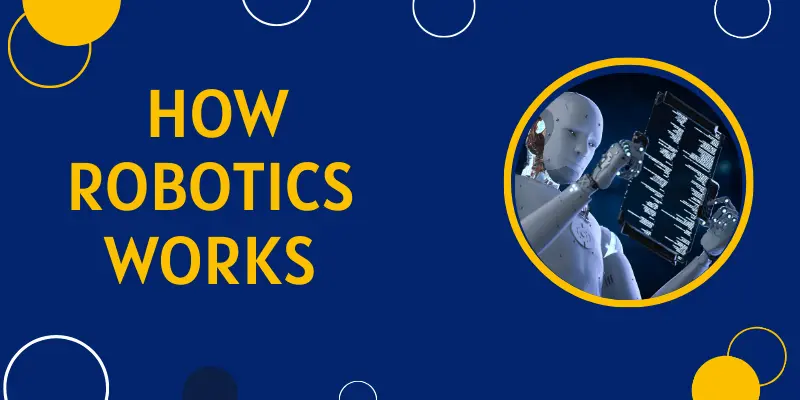Robotics- How It Enhances Efficiency in Everyday Tasks
Published: 30 Apr 2025
Imagine a world where mundane tasks are handled effortlessly, giving you more time to focus on what truly matters. Robotics is making this vision a reality-automating everyday activities, enhancing efficiency, and revolutionizing industries across the globe. From robotic arms in factories to intelligent home assistants and autonomous vehicles, robotics is reshaping the way we work, live, and interact with technology. In this article, we’ll explore how robotics is not only boosting productivity but also transforming healthcare, agriculture, logistics, and even our homes with unmatched precision and innovation.
Definition of Robotics
Robotics is an interdisciplinary field that combines mechanical, electrical, and computer engineering to design, build, and operate robots. These automated machines perform tasks with minimal human intervention, ranging from industrial applications to personal assistance.
Key Components of Robotics
- Mechanical Systems: Provide structure and movement.
- Electrical Systems: Power the robot and its components.
- Control Systems: Include sensors and processors to guide actions.
- Software Algorithms: Enable decision-making and task execution
Importance of Robotics
Transforming Industries
Robotics is revolutionizing sectors by enhancing productivity, precision, and safety. In manufacturing, robots streamline assembly lines, reducing errors and increasing output. Healthcare benefits from robotic-assisted surgeries, offering minimally invasive procedures with improved outcomes.
Enhancing Daily Life
From robotic vacuum cleaners to automated lawn mowers, robotics simplifies household chores, allowing individuals to allocate time to more meaningful activities. In agriculture, robots assist in planting and harvesting, optimizing food production.
How Robotics Works
Robots function through the seamless integration of hardware components like sensors and actuators with software algorithms that process data and make decisions. This synergy enables robots to perceive their environment, process information, and perform tasks autonomously.

Learning and Adaptation
Advanced robots utilize machine learning to adapt to new situations. By analyzing data from previous tasks, they improve performance over time, becoming more efficient and reliable in dynamic environments.
Types of Robotics
Industrial Robots
Used in manufacturing for tasks like welding, painting, and assembly, improving efficiency and consistency.
Service Robots
Assist in non-industrial environments, including cleaning robots and robotic assistants in hospitality.
Medical Robots
Facilitate surgeries, diagnostics, and rehabilitation, enhancing precision and patient care.
Autonomous Vehicles
Include self-driving cars and drones, transforming transportation and delivery services.
Humanoid Robots
Designed to resemble humans, used in research, customer service, and entertainment.
Military Robots
Employed for surveillance, bomb disposal, and combat support, reducing human risk.
Applications of Robotics
Robots automate repetitive tasks, increasing production speed and reducing errors.

Healthcare
Robotic systems assist in surgeries and patient care, improving outcomes and efficiency.
Agriculture
Automated machinery aids in planting, harvesting, and monitoring crop health, enhancing yield.
Exploration
Robots explore hazardous environments, such as deep-sea and space missions, gathering valuable data.
Domestic Use
Household robots perform cleaning, security, and companionship roles, improving quality of life.
Logistics
Automation in warehouses and delivery systems streamlines operations and reduces costs.
Advantages and Disadvantages of Robotics
| Advantages |
|---|
|
| Disadvantages |
|---|
|
Target Audience
This article is suitable for readers aged 15 and above, including students, professionals, and enthusiasts interested in understanding the impact of robotics on daily life and various industries.
Conclusion
Robotics is no longer a concept of the future; it’s an integral part of our present, enhancing efficiency in everyday tasks and transforming industries. Embracing this technology opens doors to innovation, productivity, and improved quality of life. Robotics can be open source technology and also not an open source depending. As we continue to integrate robots into our daily routines, we step into a future where human potential is amplified by intelligent machines.
FAQs
Robotics is the field involving the design, construction, and operation of robots to perform tasks autonomously or semi-autonomously.
By automating repetitive tasks, reducing errors, and operating continuously without fatigue.
While robots automate certain tasks, they also create new job opportunities in technology and maintenance sectors.
Manufacturing, healthcare, agriculture, logistics, and domestic services see significant benefits.
Yes, through machine learning algorithms, robots can improve performance over time.
Prices vary, but advancements are making household robots more accessible to consumers.
Modern robots are designed with safety features to operate alongside humans safely.
Continued integration into various sectors, with advancements in AI enhancing capabilities.
Yes, regular maintenance ensures optimal performance and longevity.
Numerous online courses, workshops, and educational programs are available for all skill levels.

- Be Respectful
- Stay Relevant
- Stay Positive
- True Feedback
- Encourage Discussion
- Avoid Spamming
- No Fake News
- Don't Copy-Paste
- No Personal Attacks

- Be Respectful
- Stay Relevant
- Stay Positive
- True Feedback
- Encourage Discussion
- Avoid Spamming
- No Fake News
- Don't Copy-Paste
- No Personal Attacks





